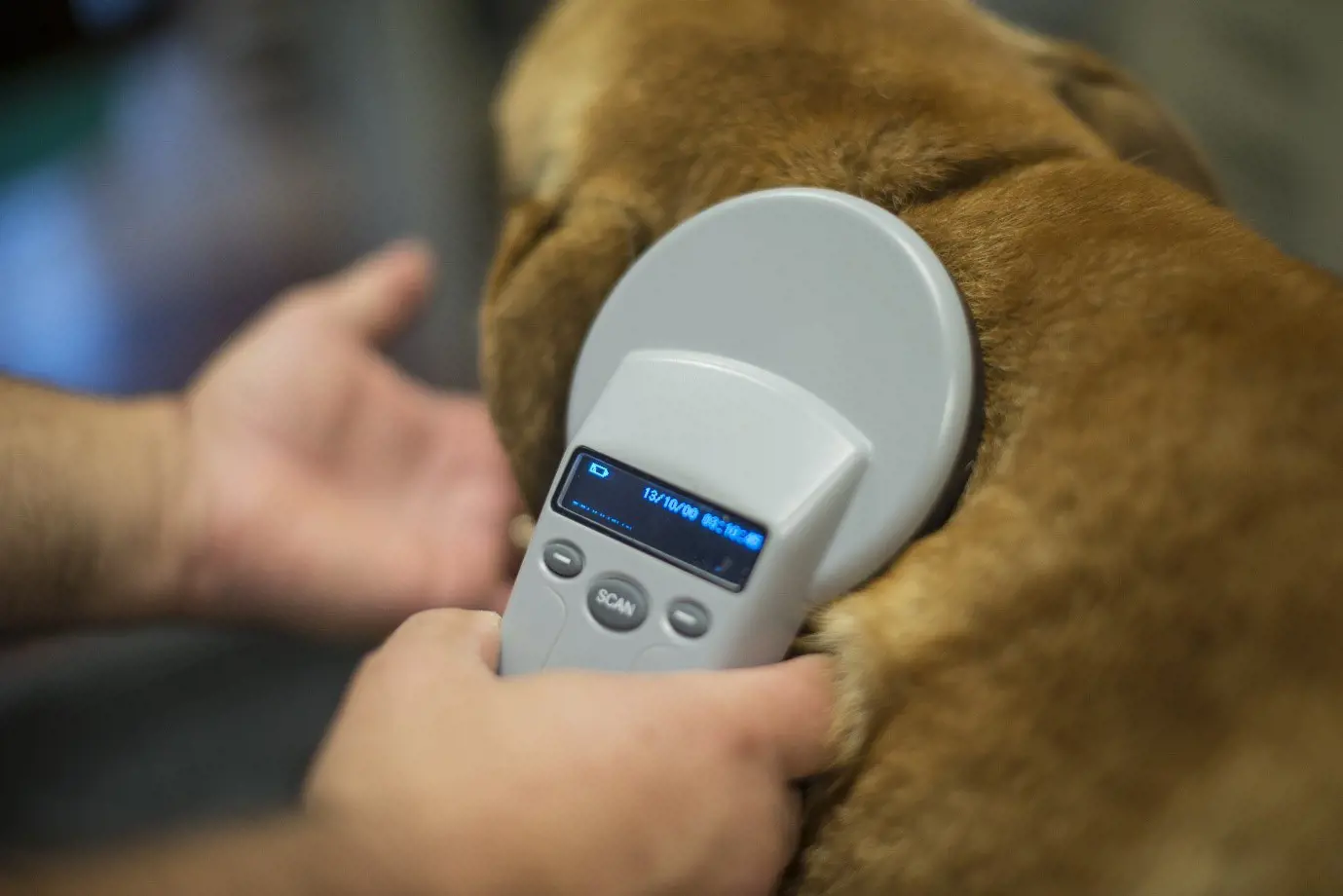Microchipping your pet- National Microchipping Month June 2024
30th May, 2023

National Microchip Month in June aims to raise awareness of the importance of keeping your pet's details up to date so should the worst happen, your pet can be reunited with you. It is also there to help show greater awareness of how important microchipping your pet can be.
History of the microchip
Technology underwent a rather large transformation at one point in time, inspiring major inventions — one of them being the itty-bitty microchip invented in 1959. The first versions of this invention were only ever used for human purposes, finding their way into electrical circuit boards, computers, and so on.
As pet ownership increased, the research into pet care grew too. People soon realised that the microtechnology they were using for human inventions could theoretically be used in animals too. Pet chipping began as a way to track animals and as a precautionary measure to identify aggressive dogs.
Microchipping was first introduced in the UK in 1989 and is internationally recognised as a permanent method of identification and traceability of pets.
Following the introduction of microchips in the UK, in the early 1990s a group of veterinary bodies, microchip suppliers and animal charities joined together, to regulate the microchip industry; it was known then as the Microchip Advisory Group (before changing to the Microchip Trade Association (MTA)) and chaired by the BSAVA.
Microchipping became compulsory in England, Scotland and Wales on 6th April 2016. Following the introduction of compulsory microchipping for dogs, veterinary practices and databases were inundated with dog owners looking to chip their dog and ensure their contact details were up to date, proving that despite the education campaigns from welfare organisations and databases alike, a high percentage of the 8.5 million dog owners in the UK had left it up until the law came into force to ensure they were compliant.
The owner of an unchipped dog will be given 21 days to comply and failure to do so may result in a fine of up to £500.
What is a microchip?
The microchip is a small (no bigger than a grain of rice) electronic chip, that is implanted under the pet’s skin between the shoulder blades and contains a unique number that can be read by a scanner. Your pet’s microchip is not a GPS tracker.
Dogs MUST be microchipped by law and under new legislation cat owners will have until 10th June 2024 to microchip their cats.
When to microchip your dog
The best time to microchip your dog is when they’re 8 weeks old or over.
How does it work
When using a scanner, we can read the unique number that identifies your pet and connects it to your contact information, so if your pet went missing or was stolen they can be scanned by the authorities and returned to you.
Make sure you are registering your dog on a government-approved database. These are:
National Veterinary Data Service
Please note that some rules and database approved companies are different if you’re in Scotland, Wales or Northern Ireland.
The government can fine you up to £500 if your dog is registered on a database that is not on its list.
Where to microchip your pet
Microchipping your pet can be done by your vet or local council, they might charge a fee. Charities like Battersea Dogs and Cats Home and Blue Cross centres can microchip your dog for free.
Keep your details up to date
It is your responsibility to keep your pets microchip information up to date. Contact the database company if you need this to be updated. Occasionally your vet will do this for you, but there is usually a charge for this service.
What if I am getting a dog already microchipped?
Find out where your pet’s registered. You can check which database your pet is registered on Check a Chip. If you do not have the microchip number, you can ask a vet, a dog warden, or a dog rescue centre to scan your pet.
Source: Joii & Bluecross
Microchipping your cat
All pet cats in England must be microchipped by 10 June 2024 and you will be given 21 days to get your cat chipped or face a fine of up to £500 if you don’t comply.
Whether you’ve just bought a kitten or adopted an older cat, making sure they are microchipped should be top of your list. Microchipping your cat gives them the best chance of being identified and returned to you if they are lost or stolen.
Microchips are safe, easy to implant and effective. Unlike collars and ID tags, microchips don’t come off and they don’t put your cat at risk of injury.
Will microchipping harm my cat?
The procedure to microchip your cat is quick and is no more painful than an injection.
There is no need for ‘recovery’ from the procedure and it won’t cause your cat any discomfort or pain – in fact, they’re unlikely to know it is even there.
When should I have my cat microchipped?
In England from 10 June 2024, it will be compulsory to have your cat microchipped from 20 weeks of age.
Many kittens are microchipped at the same time as being spayed or neutered when they are already under general anaesthetic. It is recommended to have your cat microchipped before they go outside for the first time.
Source: CatsProtection
Helpful Pages
Recent Posts
Pet Insurance Quote
- 98% claims paid *
- Claims paid directly to vets
- 24/7 vet video consultations
- Interest free monthly payments




